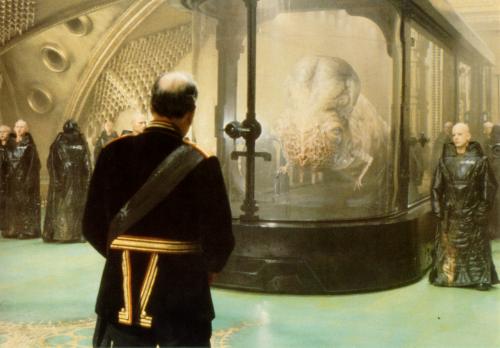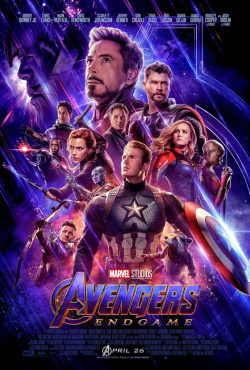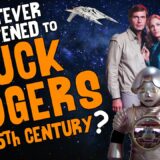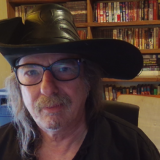 After decades mourning their lost fortune and homeland, exiled king Thorin Oakenshield and his hearty band have ousted the dragon Smaug and reclaimed their birthright, and more importantly swept aside the vast set up of the previous two films to give director Peter Jackson the canvas he needs to make with the good stuff for his last outing in Middle-Earth.
After decades mourning their lost fortune and homeland, exiled king Thorin Oakenshield and his hearty band have ousted the dragon Smaug and reclaimed their birthright, and more importantly swept aside the vast set up of the previous two films to give director Peter Jackson the canvas he needs to make with the good stuff for his last outing in Middle-Earth.
The Hobbit: The Battle of the Five Armies delivers on that promise and then some with a series of cascading action beats that mount tension on tension and yet rarely enforce battle fatigue on the audience. However, for all that the Battle itself lives up to the hype much of the subtle character work and emotional appeals of Jackson’s original Tolkien trilogy have been replaced by heavy-handed manipulation and continued confusion of focus as he tries to decide who his main character is: taciturn, gold-obsessed dwarf Thorin (Armitage) or surprisingly cunning, homebody hobbit Bilbo (Freeman). That confusion wreaks havoc on the pace as well, as the film speeds through much of its first half, and then slows precipitously as it nears the end, as if fearing to be over once and for all.
Still, for what problems “Battle” has – many of them legacy issues carried over from the decision to stretch the narrative into a trilogy – Jackson’s keen sense for action set pieces and adrenaline ensure the series (both “The Hobbit” and the Middle-Earth films as a whole) go out on a high note, if not a perfectly pitched one.
 And those action set pieces pick up right from the off as Smaug (Cumberbatch), ejected from the Lonely Mountain by the prodigal dwarves, lays waste to all the poor townsfolk and dangling plot threads in his path in a microcosm of all that is right and wrong in Jackson’s epic.
And those action set pieces pick up right from the off as Smaug (Cumberbatch), ejected from the Lonely Mountain by the prodigal dwarves, lays waste to all the poor townsfolk and dangling plot threads in his path in a microcosm of all that is right and wrong in Jackson’s epic.
The director and his talented team of actors, stuntmen and effects technicians pay-off setup after setup without always giving due consideration to how that will affect the flow of the film entire. Like the teaser for a long-awaited season finale, Smaug meets his fate above Laketown before the film’s subtitle comes up and while the moment which has been built up the most across the three films has all the sturm und drang it needs, it also leaves two hours of film before it which almost by definition cannot match the opening. Part of that is due to Smaug’s own magnificent villainy – he’s the first onscreen adversary since Christopher Lee’s Saruman to overwhelm the forces of good arrayed against him through his own personality and not just actions attributed to him. Replacement chief villain Azog (Bennet) is nowhere up to that challenge at least in part because he is not been the focus of the quest or the film’s plot until near the end. That mutability of focus continues to plague the series as our theoretical point-of-view character Bilbo spends much of the climax with Smaug, and the film itself, relegated to sidelines, a casualty of the choice to expand the story into a large scale ensemble.
 Which isn’t to say the little hobbit has nothing to do with “The Hobbit”: when Smaug’s smoke clears and every Elf and his brother realize there is a mountain nearby filled with gold and no dragon the interracial conflicts between men and elves and dwarves which has always lingered in the background of the series come to the fore. Freeman proves why he was the right choice for the character, weaving between the opposing factions, trying to play peacemaker between desperate Bard (Evans), proud Thranduil (Pace) and victorious Thorin. It’s also here where Armitage proves his mettle as Thorin succumbs to the gold lust which destroyed his forebears, becoming taciturn and paranoid. The characters’ inherent haughtiness makes it difficult for the tragic elements Jackson seems to be going for to really come across – he hasn’t been likeable enough in the previous films for audiences to be fully invested in his downfall – but the two actors almost make it work anyway. When Thorin confides in Bilbo that he believes one of his cohort has stolen the Arkenstone, the symbol of his authority as King, it makes his discovery that it is Bilbo himself who has done so heartbreaking enough to create a true emotional connection with the character. It would be even more successful if Jackson didn’t feel the need to put his thumb on the scale and make sure the audience gets exactly when he’s going for an emotional moment and what it is. It’s not enough to have Thorin shut the gates on needy townsfolk and refuse to give them a penny of his hoard, he begins repeating not just the exact words of Smaug in relation to his gold but with Smaug’s voice laid over his own not once but several times. And because this is a Peter Jackson film it goes without saying every major dramatic moment – particularly during the battle itself – is done in slow-motion with mournful music played over top of it. It’s as if he found the climax of “Fellowship of the Ring” so satisfying he has made it his template for action films ever since.
Which isn’t to say the little hobbit has nothing to do with “The Hobbit”: when Smaug’s smoke clears and every Elf and his brother realize there is a mountain nearby filled with gold and no dragon the interracial conflicts between men and elves and dwarves which has always lingered in the background of the series come to the fore. Freeman proves why he was the right choice for the character, weaving between the opposing factions, trying to play peacemaker between desperate Bard (Evans), proud Thranduil (Pace) and victorious Thorin. It’s also here where Armitage proves his mettle as Thorin succumbs to the gold lust which destroyed his forebears, becoming taciturn and paranoid. The characters’ inherent haughtiness makes it difficult for the tragic elements Jackson seems to be going for to really come across – he hasn’t been likeable enough in the previous films for audiences to be fully invested in his downfall – but the two actors almost make it work anyway. When Thorin confides in Bilbo that he believes one of his cohort has stolen the Arkenstone, the symbol of his authority as King, it makes his discovery that it is Bilbo himself who has done so heartbreaking enough to create a true emotional connection with the character. It would be even more successful if Jackson didn’t feel the need to put his thumb on the scale and make sure the audience gets exactly when he’s going for an emotional moment and what it is. It’s not enough to have Thorin shut the gates on needy townsfolk and refuse to give them a penny of his hoard, he begins repeating not just the exact words of Smaug in relation to his gold but with Smaug’s voice laid over his own not once but several times. And because this is a Peter Jackson film it goes without saying every major dramatic moment – particularly during the battle itself – is done in slow-motion with mournful music played over top of it. It’s as if he found the climax of “Fellowship of the Ring” so satisfying he has made it his template for action films ever since.
 These are not issues specific to a couple of the characters, either. Despite having nearly eight hours to play with, most of the supporting Dwarves remain generally undisturbed by Jackson (and co-writers Fran Walsh and Phillipa Boyens, working from earlier drafts with Guillermo Del Toro) who prefer to focus their efforts on Thorin’s descent into madness and the star-crossed romance of dwarf-warrior Kili and elf-maid Tauriel (Lilly), in order to lay the most tragic possible ground for the battle itself to fertilize. All of the material with Thorin, Bilbo, Smaug and even the rescue of Gandalf from the Orc armies coming to claim the gold is accomplished before even half the film is over. Living up to its name, the actual Battle of the Five Armies encompasses the bulk of the film and once it begins there is no room for much else, which is probably for the best as generally that is what Jackson and company have been best at during their second trip down Tolkien lane. He can’t quite keep the pace up and as with his previous Middle-Earth conclusion events drag to crawl once the battles have burned themselves out, leaving Bilbo the last man – er, Hobbit – standing and Jackson little choice but to try and make the film about him again after several hours of pursuing other interests. The result is a conclusion which for all its bombast loses the cohesion a grand finale requires. Taken on its own, however, The Battle of the Five Armies can be summed up with a phrase we can apply to the entire trilogy: good enough.
These are not issues specific to a couple of the characters, either. Despite having nearly eight hours to play with, most of the supporting Dwarves remain generally undisturbed by Jackson (and co-writers Fran Walsh and Phillipa Boyens, working from earlier drafts with Guillermo Del Toro) who prefer to focus their efforts on Thorin’s descent into madness and the star-crossed romance of dwarf-warrior Kili and elf-maid Tauriel (Lilly), in order to lay the most tragic possible ground for the battle itself to fertilize. All of the material with Thorin, Bilbo, Smaug and even the rescue of Gandalf from the Orc armies coming to claim the gold is accomplished before even half the film is over. Living up to its name, the actual Battle of the Five Armies encompasses the bulk of the film and once it begins there is no room for much else, which is probably for the best as generally that is what Jackson and company have been best at during their second trip down Tolkien lane. He can’t quite keep the pace up and as with his previous Middle-Earth conclusion events drag to crawl once the battles have burned themselves out, leaving Bilbo the last man – er, Hobbit – standing and Jackson little choice but to try and make the film about him again after several hours of pursuing other interests. The result is a conclusion which for all its bombast loses the cohesion a grand finale requires. Taken on its own, however, The Battle of the Five Armies can be summed up with a phrase we can apply to the entire trilogy: good enough.










